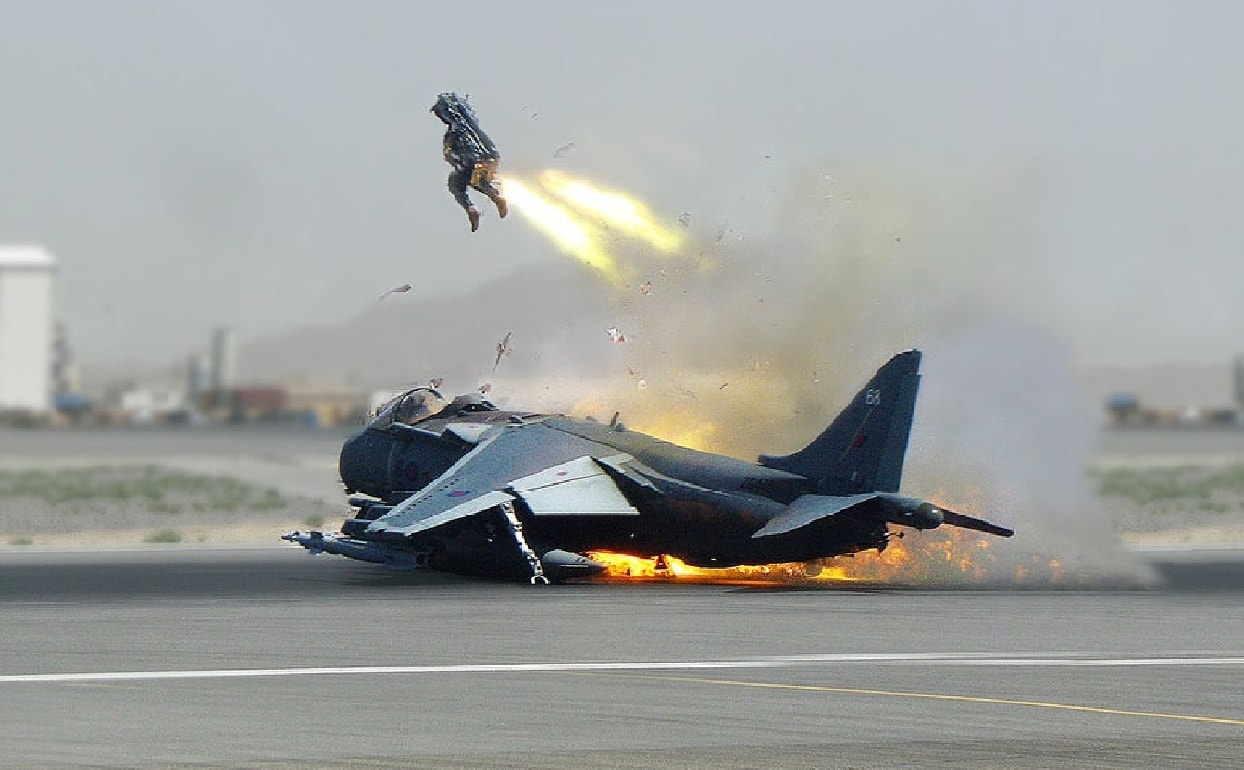An old idiom of fighter jockeys was to “hit the silk,” which meant to literally jump out of an airplane. It wasn’t as easy as it sounds, however. Climbing out of a damaged aircraft required slowing down the plane as much as possible, manually opening the canopy and then not jumping. Doing so could expose the pilot to the slipstream, which could result in a collision with the tail. Instead, pilots were told to roll out of the plane, and only after a count of ten pull the ripcord to deploy the parachute.
Most fighter pilots today wouldn’t jump or roll out of their aircraft, rather they’d be ejected. The concept of an “ejection seat” actually dates back to the early days of aviation and the first such proto-ejector seats utilized compressed air. The modern “rocket-propelled” ejection seat was developed during the Second World War, and today the technology is employed universally on fighter aircraft.
It was put to the test this past Wednesday, and the ejection seat likely saved the life of a Royal Air Force (RAF) F-35 pilot who was forced to eject after a reported engine failure of his aircraft. While the flight operations have been described as completely routine, ejecting from an aircraft is anything but – and pilots are trained to treat it as an absolute last resort.
Being launched out of an aircraft can result in serious injury including a chance of fracture of the spine – but that is still better than sure death from a plane crash. The survival rate of aircraft ejections a decade ago was around 92 percent, so again far better than risking a crash landing.
The modern ejection seat is actually rather complex, and to eject a pilot must activate an “ejection gun” by pulling a handle, which activates a rocket directly under the seat. Once activated this will launch the pilot out of the aircraft roughly 100 feet or so – then a tiny drogue parachute deploys to stabilize the pilot. If this occurs below 10,000 feet, the main chute will deploy.
If a pilot does eject at higher altitudes between 20,000 and 30,000 feet, operating the main chute wouldn’t be ideal. The parachute would work of course, but it would take 20 minutes to reach the ground. Over hostile territory, a pilot won’t want to drift slowly back to earth, but the bigger issue is that there isn’t enough oxygen at that altitude. Oxygen bottles are usually attached to the seat, but the supply wouldn’t last long enough either.
So for those high-flying ejections, it means watching for a barometric-pressure device to detect when the pilot has fallen below 10,000 feet, after which the chute can deploy. Then if the pilot isn’t too stressed out, hasn’t suffered a spinal or another injury from the jarring movements of the ejection, he/she can take in the view – and hope that rescue will come quickly.
That is because there is still the risk of leg injuries when the pilot meets the ground. And if over hostile territory the pilot will have to quickly ready the GAU-5A Aircrew Self Defense Weapon, a short M4 variant designed for downed fighter crews.
Yet, even with the risk of injury and potential capture, it still is far better than going down with the aircraft.
Peter Suciu is a Michigan-based writer who has contributed to more than four dozen magazines, newspapers and websites. He regularly writes about military small arms, and is the author of several books on military headgear including A Gallery of Military Headdress, which is available on Amazon.com.

